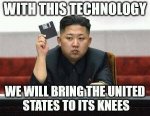I think the general quoted made an important point about this system not being tested. During the mid-to-late 1950's, when the U.S. was developing its first long-range guided missile, the Atlas, it had set off several nuclear bombs of the type it was to carry. From those tests, the engineers knew the weapon had a yield of more than three megatons, and that its design was sound and fairly reliable. They then worked on all the elaborate machinery for guiding the missile and detonating the bomb at the right altitude, while making sure the weapons system would be safe and stable enough to deploy at sites around the U.S.
The Air Force had also carried out quite a few tests of the Atlas, correcting mistakes all along until it was reasonably sure each rocket stage would work as designed. Also, the launch sites had to be designed and built, and improved versions were incorporated as the program went along. Ways to have large amounts of liquid oxygen near the sites had to be worked out, and crews had to be trained to fuel the missiles and prepare them for firing if ordered to, and to do it quickly.
Judging from that experience, there is a lot more to building an entire long-range nuclear-armed missile system than just some computer simulations of bomb designs and a few partial-range missile tests. And even if a country like North Korea finally developed a dozen or two of these weapons and deployed them, what use would they be? Its leaders would be well aware that a single U.S. submarine they would never even know was there might, in a severe crisis, launch enough of its own missiles at those sites, from close enough range, to destroy their missiles before anyone had time to fire them. Just creating and deploying a force like that, if combined with belligerent threats to use it against the U.S., would invite a preemptive strike.

